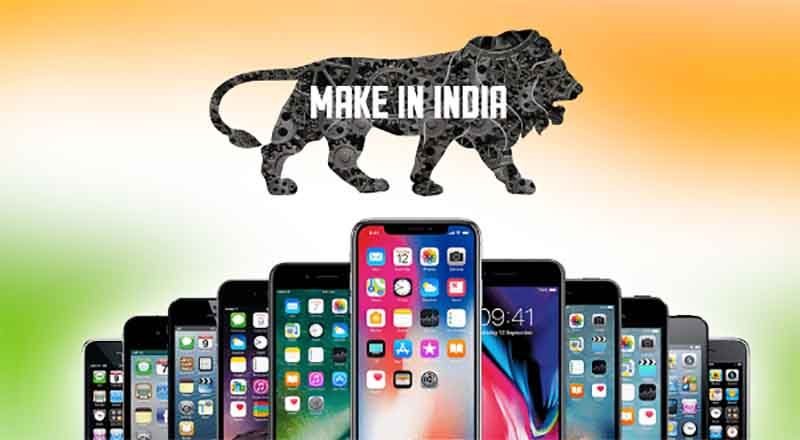Now Time to plan mobile-make in India
NEW DELHI : Early in 2019, the focal government started planning another strategy with a grandiose objective: take Indian cell phone assembling to the following level and scale up get together tasks by various scores. A chief from a huge maker got included.
Throughout the following year, he got together with government authorities at any rate once per month. In any case, by mid 2020, his organization’s advantage in the approach, called the Production Linked Incentive Scheme for Large Scale Electronics Manufacturing (PLI), began to burn out. The objectives appear to be excessively hardened.
“By March, Coronavirus had hit each significant market and I wasn’t certain of the interest for telephones in a post-pandemic world,” the leader who would not like to be distinguished said. “The public authority was reluctant to move when we mentioned that the objectives be loose. We pulled out,” he added.
The PLI conspire was at last informed in October 2020. It offers 6-4% motivator for a very long time on gradual deals of made handsets more than 2019-20. Top of the line worldwide cell phone creators, or those delivering handsets worth over $200 or ₹15,000, need to sell products worth ₹4,000 crore in 2020-21 to guarantee the prize.
Exactly 16 organizations, a blend of multinationals and Indian firms, were endorsed. Taking into account that huge numbers of them, especially contract makers, would take a month or two to get their plants, hardware and client contracts prepared, they have four months to break first year’s objectives. “The main way I might have defeated the abbreviated period is by expanding labor. However, I can’t do that now. There are social removing standards. Best case scenario, you have 70-75% of your labor force in the industrial facility,” the leader contemplated.
While there are mumbles of inconvenience among some in the gathering of 16, most organizations are making a valiant effort. Indian agreement makers, for example, Dixon Technologies (India) Ltd. also, portable creators like Lava International Ltd., whose applications were affirmed, revealed to Mint that they can meet the objectives—₹500 crore in 2020-21 for homegrown organizations.
Furthermore, if these organizations can see through the main troublesome year, the approach shows up somewhat enchanting for the following four. The public authority is promising to siphon $5.5 billion or about ₹41,000 crore during the plan’s five-year residency.
The matter of cell phone gathering is an uncommon Make-in-India example of overcoming adversity. India had two portable assembling units in 2014. By 2019, there were more than 200. The quantity of versatile handsets created shot up from 60 to 290 million in a similar period; the estimation of handsets delivered bounced multiple times to $30 billion. India, so far, depended on a procedure of import replacement with cell phone constructing agents to a great extent taking into account the low-end homegrown market. That market might be immersing. To develop, Indian telephone creators need a fare prod. “Regardless of what we state about the Indian market, our GDP is under 4% of the world. India’s utilization of cell phones is 4.5% of the world regarding esteem and 15% in volume,” Hari Om Rai, administrator and overseeing head of Lava International Ltd. said. “Import replacement is anything but a decent model for India since it is a little market. We can develop by trading to the world,” he added.
The public authority’s reasoning: the PLI conspire, alongside two other more modest plans around the assembling of parts (Scheme for Promotion of Manufacturing of Components and Semiconductors) and framework (Electronics Manufacturing Cluster Scheme), could support fares of both very good quality and mid-range telephones.
In an ongoing report, Neelkanth Mishra, the co-head of Equity Strategy, Asia Pacific, for Credit Suisse composed that if the PLI targets are met, extra handset assembling of almost 10% of the worldwide market by worth and volume could move to India by 2023-24; India’s import/export imbalance could improve by $24 billion. He peppered the report with a portion of alert. “These plans may see a few deferrals: the Covid could push out timetables, as would view of strategy vulnerability (counting at the state level) among worldwide makers.”
Moreover, there are away from around dispensing of the motivator, which is relied upon to be an immediate bank move after cases for payment are submitted. The cases would be confirmed by a task the executives office and requirements the endorsement of an engaged board of trustees containing the secretaries of key focal services and offices.
“We are content with the plan of the plan. We are just trusting that the payment is as guaranteed,” Bipin Sapra, an accomplice at Ernst and Young (EY) and a previous Indian Revenue Service official, said. “When the focal government begins dispensing the cash, we will get lucidity concerning the spending plans they have. Financial plans are pushed for all impetuses at the present time,” he added.
To an enormous degree, the accomplishment of the plan relies upon how productively the payment cycle is dealt with.
An inventive plan
India will confront China and Vietnam—two enormous cell phone exporters—as it starts up its fare dreams. China sent out telephones worth over $100 billion out of 2019; Vietnam over $35 billion. India sent out under $3 billion of every 2018-19.
Indian producers are off guard on various checks. Industry discussions are packed with “inability”. They range from helpless coordinations to inconsistent force flexibly. An investigation by Ernst and Young and the India Cellular and Electronics Association (ICEA), ‘Versatile assembling in a post Covid-19 world’ analyzed assembling costs over the three nations. Expecting that $100 is the expense of creating a telephone without appropriations, China can make it at $80 subsequent to calculating in the motivating forces the nation gives. Additionally, the expense of assembling a telephone in Vietnam is $89.
The PLI conspire connects a portion of India’s deficiency. The assembling cost, subsequent to considering in PLI and different endowments, aggregates $92-$93.
“The handicap stack runs somewhere down in the economy. For instance, the duties on fuel. Second, power isn’t subsumed under GST (merchandise and enterprises charge). So how would you become serious?” Pankaj Mohindroo, administrator of industry body ICEA inquired. “While the PLI strategy needed to strike at a portion of these incapacities, it additionally must be World Trade Organization (WTO) grievance,” he added.
Fare sponsorships aren’t permitted by the WTO and in this manner, a more innovative structure must be planned, which is the creation based one.
Third, the arrangement to a great extent looked to draw in top of the line telephone creators yet couldn’t overlook the mid-reach or low-end makers by the same token. Other than Dixon and Lava, homegrown producers endorsed for the plan incorporate Micromax, Padget Electronics, Neolyncs and Optiemus Electronics. In the $200 or more classification, organizations whose proposition have been endorsed incorporate Samsung, Foxconn Hon Hai, Wistron and Pegatron.
Around 300,000 direct positions are required to be produced by the plan. A guide to the public authority assessed the yearly compensation bill for all organizations taking an interest in the plan to be about ₹6,000 crore. In five years, the compensation bill is required to ascend to ₹30,000 crore.
Taking into account that the public authority’s motivation cost for a very long time is ₹41,000 crore, it is successfully sponsoring the compensation bill. PLI is additionally financing the capital use. Organizations endorsed under the plan would contribute about ₹11,000 crore to meet their business targets.
The plan is likewise an enormous markdown on India’s present worth add, the consultant referenced above clarified. Producers in India import the majority of the parts and the get together worth reaches somewhere in the range of 8% and 15%.
“On the off chance that 15% is the get together value, a motivator of 6% is right around a half markdown,” he said.
Crusty fruit-filled treat
The EY report cited before expressed that over 80% of the cell phone incomes are part between five organizations—Samsung, Apple, Huawei, Oppo and Vivo. To take an interest definitively in the fares market and worldwide gracefully chains, tapping these organizations to build nearby creation is vital.
Samsung began amassing telephones in India in 2007 and has as of late set up a cell phone show producing unit. Chinese organizations, for example, Vivo have sloped up nearby get together activities throughout the most recent couple of years yet are not, at this point the kind of the period in light of international tussles.
The Apple environment was a chewing hole—Apple, one of the world’s biggest organizations by market cap, fabricates locally however the volumes are fairly low. The organization started fabricating in 2017 with the original of iPhone SE. Its made-in-India portfolio accordingly included iPhone 6s and iPhone 7 of every 2018, iPhone XR in 2019 and iPhone 11 and the new iPhone SE in 2020. Apple’s agreement makers and providers produce these telephones from eight areas in India; in China, the organization’s providers fabricate from more than 350 areas.
The Indian government and agents from Apple have been arranging motivating forces in any event since 2016. The charming has obviously expanded in the course of the most recent 15 months. “There are unique gatherings inside the focal government that have shortlisted the main 50 worldwide makers and they are contacting every last one of them exclusively,” a chief from a global who would not like to be named said.
On the off chance that there is a draw, there is a push factor, as well. Apple is quick to broaden its worldwide flexibly chain. In June 2019, Nikkei Asian Review detailed that Apple needed providers to assess the cost ramifications of moving upto 30% of their creation limit out of China. “Nonetheless, it is difficult to move assembling to India. Changes like that take years,” a previous worker of Apple told Mint.
PLI appears to be a decent beginning towards that change. Three of the four organizations affirmed in the $200 telephone or more class—Foxconn Hon Hai, Wistron and Pegatron—are Apple providers.
Scale talk








